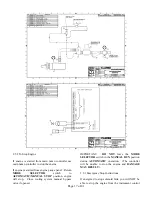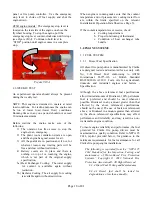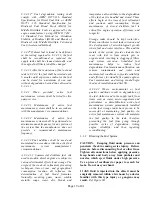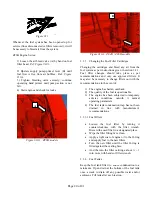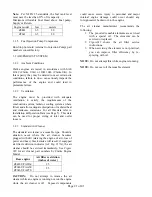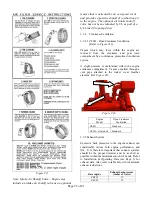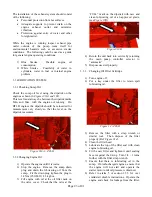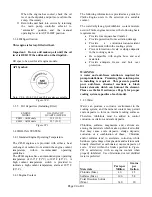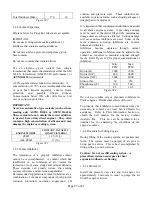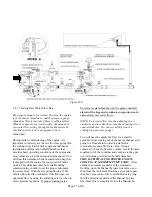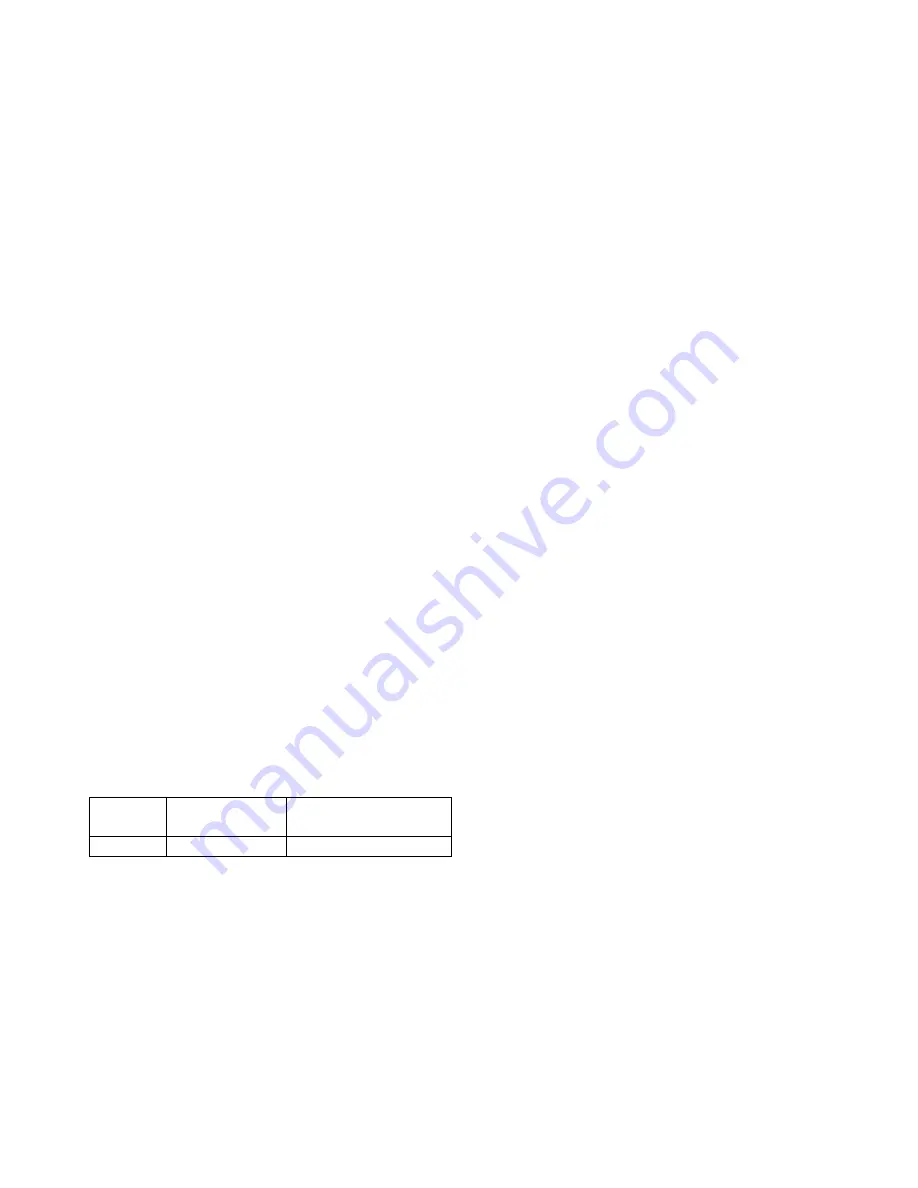
Page 12 of 41
This section of the manual should be read in
conjunction with the relevant Installation and
Operation Data Sheets. If there is any doubt about an
installation, contact should be made with Clarke
Customer Support giving exact details of the
problem.
All installations should be clean, free of any debris
and dry. Care should be taken to ensure that there is
easy access to the engine for maintenance and repair.
The safety of personnel who may be in the area of the
engine when it is running is of paramount importance
when designing the installation layout.
1)
Secure pump set to foundation and complete
installation in accordance with pump
manufacturer’s instructions. Perform engine
to pump coupling alignment. Lubricate Falk
coupling with supplied grease or driveshaft
universal joints with NLGI grade #1 or #2
grease at the (3) Zerk fittings. (Refer to
section 2.4 for specific alignment
instructions).
2)
Engine with Heat Exchanger Cooling: Install
the heat exchanger discharge pipe. The
discharge pipe should be no smaller than the
outlet connection on the heat exchanger.
Discharge water piping should be installed in
accordance with applicable codes. All
plumbing connecting to the heat exchanger
must be secured to minimize movement by
the engine. Cooling loop water pressure to
the heat exchanger must not exceed the limit
that is stated on the heat exchanger supplied
with the engine.
3)
Install all engine cooling system draincocks
and plugs.
Qty
Description
Location
1
1/8” Draincock
Heater Inlet Tube
4)
Engine is typically provided with premixed
coolant installed. If engine is not provided
with coolant or there is a need to top off, fill
engine cooling system with premixed 50%
water / 50% coolant solution. Use only
coolants meeting ASTM-D6210
specifications for heavy-duty diesel engines.
Never use light-duty or automotive coolants
in the engine that are stated as ASTM-D3306
only. Refer to
Figure #23
in section 3.4.3
for cooling system capacity. Refer to section
3.4.5 filling procedure.
5)
Engine is shipped with oil
installed
. For
make-up oil specifications refer to section
3.3 Lubrication System.
6)
Connect fuel supply and return line to fuel
supply tank plumbing. Reference the Fuel
System section of the Installation and
Operation Data (see Page 5), for piping size,
maximum allowable fuel pump suction, and
maximum allowable fuel head requirements.
Fill supply tank with
ONLY
#2 diesel fuel
(ASTM D-975) or BS 2869 Class A2 “Red”
diesel fuel, bleed supply system of air and
check for leaks.
CAUTION:
Biodiesel fuel
is not recommended or stand-by equipment
that can have minimal fuel consumption
(such as standby generators, fire protection,
etc.) For standby applications use only
petroleum based diesel fuel with DEUTZ
approved conditioners/additives. For fuel
conditioners/additives check with your local
DEUTZ dealer, or Clarke. Fuel supply level
must meet applicable code requirements. Do
not use a copper based or galvanized material
for any component of a diesel fuel system.
The fuel will chemically react with the zinc
resulting in clogged fuel filters and injector
systems.
7)
Remove protective covering on air cleaner
element.
8)
Connect jacket water heater (if supplied) to
AC power source. Connect the supplied
heater connection wire directly to a customer
supplied electrical junction box. The
electrical supply requirements are indicated
on the connection box. Connect to the heater
directly to the junction box at the end of the
heater only.
Supply wiring should never be
routed through the engine gauge panel
.
Severe damage to critical engine control
components could result. Energize heater
only after step #4 is completed.
9)
Connect exhaust system to flexible
connection on the engine. The exhaust
system plumbing must be supported by the
building structure and not the engine. The
exhaust flexible connection is provided only
for the purpose of thermal expansion and
vibration isolation, not for misalignment or
directional change.
10)
Make electrical DC connections between the
engine gauge panel terminal strip (if
supplied) and the controller per the controller
manufacturer’s instructions. Refer to the

















